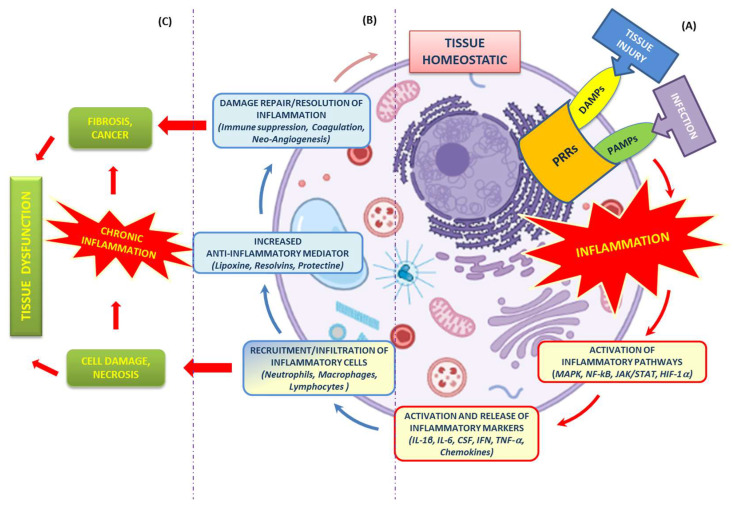Figure 1.
Mechanisms of the inflammatory response. (A) Tissue homeostasis can be altered by external stimuli (tissue injury or infection), resulting in the activation of the innate immune system (PRRs). Such activation triggers an inflammatory response cascade (red arrows) driven by multiple pathways (MAPK, NF-kB, JAK/STAT, HIF-1α) and the release of inflammatory markers (IL-1β, IL-6, CSF, IFN, TNF-, chemokines) at the site of injury. (B) This release is aimed at the recruitment and infiltration of various immune cells (neutrophils, macrophages and lymphocytes). Their presence ensures both the continuation of “transient” inflammation, which is useful for eliminating the cause of tissue injury, as well as the secretion of anti-inflammatory and pro-regenerative cytokines that promote the resolution of inflammation, tissue repair and restoration of tissue homeostasis (blue and pink arrows). (C) Uncontrolled or chronic inflammation, promoted by cellular damage/necrosis, generates remodeling (fibrosis and cancer) and tissue dysfunction.

